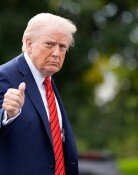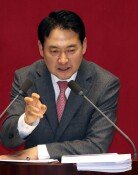Conflict Expected: No More Weak Dollar vs. Weak Dollar
Conflict Expected: No More Weak Dollar vs. Weak Dollar
Posted February. 04, 2004 23:07,
With predictions of a weaker dollar even before the Group of Seven (G7) meeting, the values of currencies in many countries are moving higher against the dollar. The trend is especially evident in East Asian nations that are highly dependent on exports to the U.S. such as Korea, Japan, and Taiwan.
All eyes are on the possible outcome of the G7 meeting because the global financial market suffered greatly when the U.S. dollar steeply fell right after G7 nations announced a joint statement in Dubai, United Arab Emirates in September 2003, urging for more flexible exchange rates.
Japan and the EU Brace to Stop Depreciation of the Dollar
Japan and the EU are voicing the same opinion for a change. They are insisting that they will receive a promise from the U.S. to deal with the depreciation of the dollar.
Last year, Japan spent more than 20 trillion yen in currency intervention to stem the yens rise against the dollar. In January, the number exceeded seven trillion yen, showing a monthly record high. However, the value of the yen, which was 115 against the dollar last September, is on the rise and recently recorded as high as 105.
Fearing that a strong appreciation of the yen could undermine its long-waited economic recovery, Japan pushed on with currency intervention despite criticisms that it is an artificial market intervention. However, with clear limits to the intervention of Japan alone, more people are voicing out for cooperation of the international community as the only solution.
The EU seemed relaxed even after the meeting in Dubai but is getting more nervous with signs of rapid depreciation of the dollar. Although it has yet to intervene in the market, the businesses are urging the European Central Bank (ECB) to present countermeasures.
The EU is keeping its distance from Japan arguing, The EU suffered from Japans currency intervention that disrupted the foreign exchange market and raised the value of the euro.
The U.S. Will Not Budge--
The weak dollar is mainly due to the increase in twin deficit (trade deficit and fiscal deficit) but the U.S. government more or less contributed to the trend.
On February 3, U.S. Treasury Secretary John Snow clearly emphasized that the U.S. has no plan to change the trend of the weak dollar. He said, The value of currencies should be determined flexibly through open currency markets.
With the presidential election coming up in November, the Bush administration is unlikely to give up the weak dollar policy in order to maintain support from industries, the traditional supporter of Republicans. Between October and December 2003, the U.S. GDP continued to show strong growth thanks to increase in exports, rising four percent compared with the previous quarter.
parkwj@donga.com



![패딩을 드라이클리닝?…오리털 기름기 녹여 보온력 뚝 [알쓸톡]](https://dimg.donga.com/c/138/175/90/1/wps/NEWS/IMAGE/2025/12/22/133012676.3.jpg)



